#hachiman jinja
Explore tagged Tumblr posts
Photo

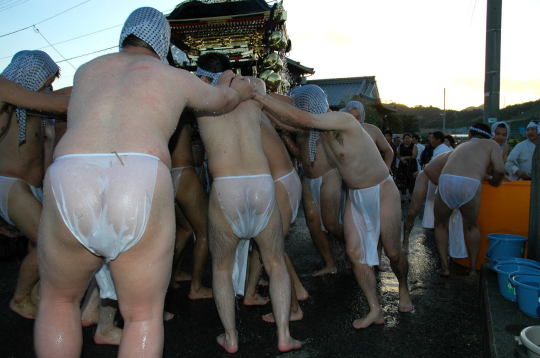
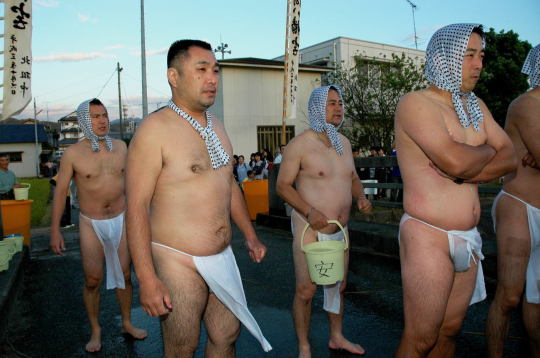
川狩り/秋季大祭 - 勝岡八幡神社, 松山, 愛媛 Kawagari/Autumn festival - Katsuoka Hachiman Jinja, Matsuyama, Ehime
173 notes
·
View notes
Text




New Year's decorations at a small Benten shrine (see Benten's lute?) and Inari shrine. The sasaki leaves, often displayed at shrines, and the added pine twigs both symbolize immortality. The rice cakes plus orange, called kagami-mochi, represent prosperity.
107 notes
·
View notes
Text
Oracles of the Three Shrines / Sanja Takusen (三社託宣)
This is one of my favourite teachings and piece of Shinto history. I've always really liked these, so I wanted to share with you all! It has a bit of a controversial history as you can read on the Kokugaukuin entry, but, it's important to note this - "However, even if assuming they were a forgery, the content of the oracles still had moral efficacy.
The oracles were thus not rejected as an effective means of cultivating the morals of the common people such as bringing about a sense of devotion for the kami, and won support from adherents of popular Shinto (tsūzoku shintō), teachers of practical ethics (sekimon shingaku) and persons connected with Buddhism espousing the unity of the three teachings, i.e. Shintō, Buddhism, and Confucianism.
A vast amount of handbooks, picture scrolls and prints were produced for the common people.
Moreover, pious associations (kō) offering dedicatory lanterns (tōrō) to the three shrines were formed in various places.
Faith in the sansha takusen deeply permeated the whole country and did not abate throughout the early modern period.."
(Additionally, many Sanja Takusen shrines for the three Kami-sama were enshrined and established together at particular Jinja, I remember in particular Kibitsu Jinja has a space for them!)
I adjusted the official English translation slighty (you can see the official one on Kokugakuin here) And, I've also included easy to read Japanese and explanation in Japanese as well - courtesy from this website page and the author
These teachings emphasize honesty, sincerity (spiritual 'cleanliness' / clarity), and mercy / compassion
----
Amaterasu Omikami-sama:
"If you plot and scheme to deceive people, you may fool them for a while, and even seem to have profited from doing so. But you will without fail be visited by divine retribution. To be deeply sincere and honest may have people shun you and speak ill of you, but in the end, such a person will receive the blessings of the sun and moon."
【天照皇大神宮】
ぼうけいはがんぜんのりじゅんたりといえども、かならずしんめいのばつにあたる。謀計は眼前の利潤たりと雖も、必ず神明の罰に当る。
訳:謀をめぐらして人を欺くことは、目前の利益になるかもしれないが、必ず神様の罰にあたるぞ。
しょうじきはいったんのえこにあらずといえども、ついにはにちげつのあわれみをこうむる。正直は一旦の依怙に非ずと雖も、終には日月の憐れみを蒙る。
訳:正しき直きこころはその場のたのみにならない場合もあるかもしれないが、最終的には神様の恵みをいただくぞ。
Hachiman Okami-sama:
"Follow sincerity without fail. Though one could attempt to eat a red-hot ball of iron, one must never eat food from a person with an insincere heart. Though one might sit above a blazing fire hot enough to melt copper, one must never go into the place of a person of an insincere mind. This is to keep a clear heart."
【八幡大菩薩】
てつがんをしょくすといえども、こころけがれたるひとのものをうけず。 鐵丸を食すと雖も、心汚れたる人の物を受けず。
訳:たとえ、食べ物がなく鉄の塊を食べたとしても、心汚れた人の食べ物は受けるなよ。
Kasuga Okami-sama:
【春日大明神】
"Even though you may see someone of a household who seems to have managed for long to avoid misfortune, the Kami will not enter into the household of a person with a perverse and cruel disposition. On the other hand, even though a man be in mourning for his father and mother*, if he is a man of compassion, the Kami will enter in his home. Compassion is all important."
せんにちのしめをひくといえども、じゃけんのいえにはいたらず。千日の注連(しめ)を曳くと雖も、邪見の家には到らず。
訳:たとえ、長い期間に亙って神聖な生活をしていて汚れていなくても、邪な家には行ってはいけない。
じゅうふくしんこうたりといえども、じひのしつにおもむくべし。重服深厚たりと雖も、慈悲の室に赴くべし。
訳:たとえ、重い忌服であったとしても、死の穢れを厭うことなく、哀れみ慈しみ深い家には行かなければならない。
*[Traditionally, there is an idea someone in mourning would be considered to have kegare, negative energy, bad energy - and therefore the Kami-sama would avoid them and they should avoid the Kami-sama. But the teaching here says even though he is in mourning and may have kegare, his heart is pure and compassionate, so the Kami-sama will enter his home regardless]


#shinto#shintoism#sanja takusen#Amaterasu Omikami-sama#Amaterasu Omikami#Hachiman Okami#Hachiman Okami-sama#Kasuga Okami#Kasuga Okami-sama#Oracles of the Three Shrine
57 notes
·
View notes
Note
Hello! I just saw your post about the conference. I know it's very niche, but I'd love to hear / read more about your sangaku presentation. I actually went back to Konnō Hachiman-gū this afternoon, hoping to see more examples, but no such luck. (I cannot decipher them, of course, but I taught English at a faculty of engineering, and my students could. Sometimes. )
I'll put together something about the shrine, but どうぞお先に。Nudge nudge hint hint.
Hi, thanks for the message!
The presentation was in two main parts: first the historical context of the Edo period and function of sangaku in developing mathematics during that time, and second a closer look at Kashihara Miminashi Yamaguchi-jinja's example with a modern solution. I can't read the sangaku in full, but I have been able to pick out the parts with numbers and compare some of their results with the formulas.
I can probably put together a mini-series at some point. Which parts would you want to hear more about? (That's a general question btw: anyone can reply and add the conversation of course.)
37 notes
·
View notes
Text
06 doroshi hachimangu 泥氏八幡宮:

Dorothy Hachimangu is devoted to Hachiman, a popular god of war revered by many samurai families, and because of it one of the most prolific types of Shrines. If you participate in Grid Drive, you may have been here before, it is one of the stops on some drives! I don't participate in Grid Drive super often, because as mentioned, really bad SL driver and trying to figure out how to even get back to the region I'm supposed to be on when I've catapulted off into the ether…or find my car when I've crashed to clean it up…or how to even get out of this lake, the bridge is all the way UP THERE and I can't even figure out how to get up a mountain this steep…region crossings are super not my friend but not my only problem. But I've done it occasionally (painfully), and this Shrine on Heterocera was one of the places it routed me to! (If you haven't done Grid Drive, I recommend doing it at least once! There's a story that takes you on a tour around SL, with weekly stories. Bring your own vehicles, I needed a boat too, and no I'm not better at driving that. You also get a vehicle as a reward for getting through it!) You can get a hamaya- which is usually an arrow, but in this case it is a chainsaw as there is the holy chainsaw enshrined here- and a pouch style amulet at this Shrine, to protect you from bad luck in the new year!
The Goshuin Project
01 Warbunton Shrine | 02 Itame Ham Jinja | 03 Nadeko Shrine
04 Japonica Shrine | 05 Eifuku Shrine | 06 Doroshi Hachimangu
07 Laem Shrine | 08 Azuki Shrine | 09 Kumoshima Shrine
10 Cue Gri Shrine | 11 Hakoniwa | 12 Kajiko Shrine
13 Mambow Shrine | 14 Katakana Jinjya | 15 Otoraku Shrine
16 Donguri Shrine | 17 Nekoraku Jinja | 18 Mr. Louis Shrine
19 Il Micio Shrine | 20 Shiki Shinto | 21 Katsudon shrine
22 Honpou Inari Shrine | 23 Umigami Shrine | 24 Hazakura Jinja
25 Susukino Inari Shrine | 26 Para Shrine | 27 Pomponne Shrine
28 Yata Shrine | 29 Yozakura Jinjya Ocean | 30 Kamura Neko Shrine
31 Noha Shrine | 32 Yoimachigusa Oinari Inari Shrine | 33 Tokyo Amida Shrine
34 Hinamizawa Shrine | 35 Akiba West Shrine | 36 SL-Utopia Shrine
37 Hamamura Shrine | 38 Yaoyorozu Shrine | 39 Venezia Shrine
40 Megami Jinja | 41 Yasaka Jinja | 42 Apo Inari Jinja
43 Inari Shrine | 44 Laputa Shrine | 45 Otonari Myojin
46 Kiyomizu Temple
** BONUS GOSHUIN ** (not on list, joined in open call)
Mishima Shrine * Saihate Inari Jinja * Okinawa Shrine
Kingyo Jingu * Ashiyu Onsen Shrines * H Jinja
Mendokuse Shrine * Buzzmitama Shrine * Tonarino Shrine
Eniq Shrine * Lyka Tenmangu * Drobak Shrine
Princess Shrine * Wazawai-saru Shrine
View all SL Goshuin in order
View 2025 New Year Goshuin in order
3 notes
·
View notes
Text
Torii
The Origins of Torii
There are two kinds of Sandō (road that approaches the shrine), a road that comes from a town or city and continues to the shrine, and the road from the entrance of the shrine to the Haiden (Prayer Hall) • Honden (Main Hall). Both are sacred roads in which visitors walk, and mikoshi are carried along the path. Therefore in order to demarcate the sacred land, torii, koma inu, stone lanterns, etc… are placed. Koma inu, and stone lions will be discussed later on, here is where torii are being discussed. In fact the origin of Torii is not clear. From extant examples and paintings in picture scrolls, it is known that a similar type of torii existed in the 12th century, but it is not known when and for what purpose they were built.
Why are there so many different types of Torii?
The present torii gate functions as a symbolic gateway, indicating that the area inside (beyond) the gateway is sacred ground. It also serves as a warning that any disrespectful behavior beyond the gate will result in punishment. Another feature of torii gates is that there are many types. It is said that the shape of the torii may have indicated the type of kami, but this is not certain. The form can be broadly classified into the Shinmei type and the Myojin type. While the Shinmei type is simple, the Myojin type is highly decorative and sometimes painted in vermilion. This may be related to the fact that Myojin-style torii are often erected at shrines of common people’s beliefs, as they have a strong sense of Shinto/Buddhist syncretism.

Parts of a Torii Gate
笠木 Kasagi
Cap Piece that covers the top of a Torii
島木 Shimagi
Long horizontal timber above the columns on a Torii, right below the Kasagi
台輪 Daiwa
The single piece placed where the columns meet the Shimagi, believed to prevent rot from setting in from the top of the pillars
額束 Gakutsuka
The plaque that holds the name of the shrine
楔 Kusabi
Wedges/Lynchpins
貫 Nuki
Lower horizontal timber, traditionally does not pierce the columns, and in Shinmei style torii, is said to be round
柱 Hashira
The two vertical columns leading up to the horizontal bars
藁座 Waraza
Reinforcement for the Daīshi at the bottom of the torii
台石 Daīshi
Stone pedestal at the bottom of torii
亀腹 Kamebara
White plaster bun-shaped mounds used to reinforce support base stones.
Varieties of Torii
神明系 Shinmei Style

Image Sources: 1 , 2 , 3 , 4
黒木鳥居 Kurogi Torii
Made from logs where the outer bark is still attached. Seen at shrines like 野宮神社 Nonomiya Jinja.
鹿島鳥居 Kashima Torii
The lower cross bar is quadrilateral (instead of rounded), and sticks out past the pillars holding the torii up. Seen at shrines like 鹿島神宮 Kashima Jingū.
神明鳥居 Shinmei Torii
The pillars, top crossbar and lower crossbar are all rounded. See at shrines like 神明宮 Shinmeigū.
伊勢鳥居 Ise Torii
The upper crossbar is pentagonal in shape. Seen at shrines like 伊勢神宮内宮・外宮 Ise Jingū Naikū • Gekū and 熱田神宮 Atsuta Jingū
明神系 Myojin Style
Usually these have the cap piece called a Kasagi while Shinmei do not

八幡鳥居 Hachiman Torii
The edge of the top bar is slanted. Seen at shrines like 岩清水八幡宮 Iwashimizu Hachimangū.

台輪(稲荷)鳥居 Daiwa (Inari) Torii
Below the upper crossbar are Daiwa (see above definition). Seen at shrines like 伏見稲荷大社 Fushimi Inari Taisha.

春日鳥居 Kasuga Torii
Less warping of the cap piece and upper crossbar (fairly flat). Seen at shrines like 春日大社 Kasuga Taisha.

両部鳥居 Ryōbu Torii
Has smaller support columns attached to the main pillars. Seen at shrines like 厳島神社 Itsukushima Jinja, and 氣比神宮 Kehi Jingū.
中山鳥居 Nakayama Torii
The same as a Myōjin Torii, except the lower crossbar doesn’t stick out. Seen at shrines like 中山神社 Nakayama Jinja.

Image Sources: 1 , 2
明神鳥居 Myōjin Torii
Both the upper and lower crossbars have warping (meaning they’re more curved). Seen at shrines like 神田明神 Kanda Myōjin.

山王鳥居 Sannō Torii
Above the Kasagi, there is an extra part called the Gasshō, which is a triangular shaped piece. Seen at shrines like 日吉大社 Hiyoshi Taisha.

三輪鳥居 Miwa Torii
To the sides are smaller support torii. Seen at shrines like 大神神社 Ōmiwa Jinja.
Translations of this page

4 notes
·
View notes
Video
youtube
Japan that no one knows. Don't kill them
Sakurada Shrine 3 2 17 Nishiazabu, Minato-ku, Tokyo Near Roppongi Hills
This shrine is located near Roppongi Hills, a building that symbolizes the city.
From the anecdote of Minamoto no Yoritomo, it seems as if cherry trees have been planted to connect with the people of the past. Upon entering the shrine grounds, it is very quiet. The events of the Heian period seem to come back to life today. A small Inari-san sits to the right of the main shrine and I almost overlooked it. This is also an important deity. I hope you will visit and like this comfortable shrine.
Sakurada Shrine Neighborhood 1 minute on foot Roppongi Hills 2 minutes on foot Jyodo Sect. 7 minutes on foot Izumo Taisha Tokyo Branch Shrine 10 minutes on foot Asahi Shrine 11 minutes on foot Tatsudo Shinmyougu Tenzo-jinja Shrine 13 minutes on foot Juban Inari Shrine (Minato Shichifukujin Houshin Houshin) 14 minutes on foot Haseji Temple (Azabu Dai-kannon) 14 minutes on foot Azabu Hikawa Shrine 15 minutes on foot Hiroo Inari Shrine (Hiroo Inari Shrine) 17 minutes on foot Nogi Shrine 19 minutes on foot Akasaka Hikawa Shrine 19 minutes on foot Zempukuji Temple 20 minutes on foot Hisakuni Shrine (Minato Shichifukujin Hotei Shrine) 21 minutes on foot Motojinmyogu Shrine (Tenzo Shrine) 24 minutes on foot Iikura Kumano Shrine (Ebisu, one of the seven gods of good fortune in Minato) 24 minutes on foot Kokugakuin University Temple 25 minutes on foot Nishikubo Hachiman Shrine 25 minutes on foot Shibuya Hikawa Shrine 25 minutes on foot Akiba Shrine (Kita-Aoyama, Minato-ku) 26 minutes on foot to Jodoshu Shinkoin Temple 29 minutes on foot Thatsuki Inari Shrine
0 notes
Text
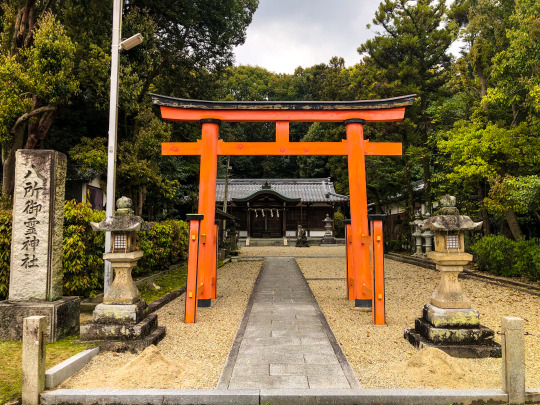

Az utolsó napom Narában. Lesétáltam pár kilométert és meglátogattam néhány eldugott kis szentélyt. Az első a Hassho Goryo Jinja, amiről szégyen szemre nem sokat tudok. Mindössze annyit, hogy 780 környékén épült és az Akishino-dera templomhoz tartozik. A második a Hachiman Jinja, amelynek meglehetősen lényegre törő nevéből is látjuk, hogy egy Hachiman szentély, de sajnos többet nem tudok róla.
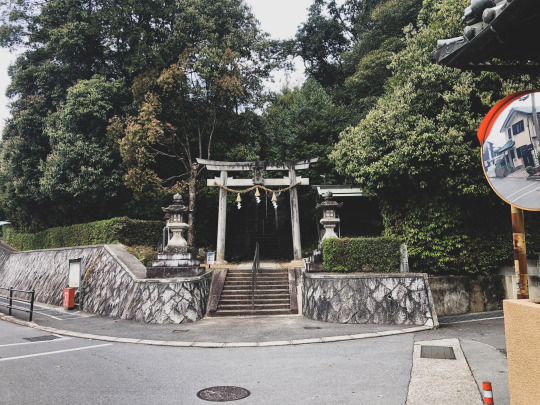
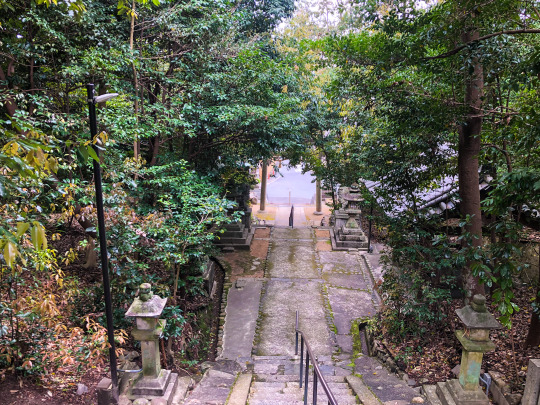
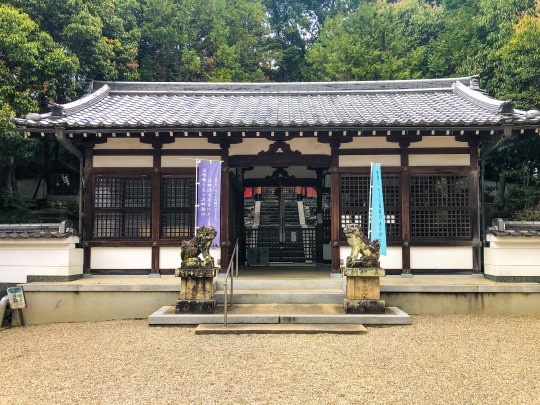
Harmadik pedig a Narazuhiko Jinja, ami a minden év októberében megrendezett Okinamai fesztiválról híres. Úgy tartják, hogy az itt bemutatásra kerülő Okina tánc közel 1300 éves tradíció, és a tradicionális nó színház eredete is erre vezethető vissza. A szentély vadregényes hátsó traktusában egy hatalmas, gyönyörű szent fa is található.
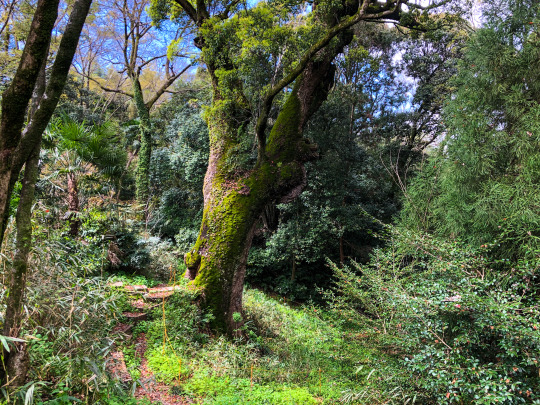
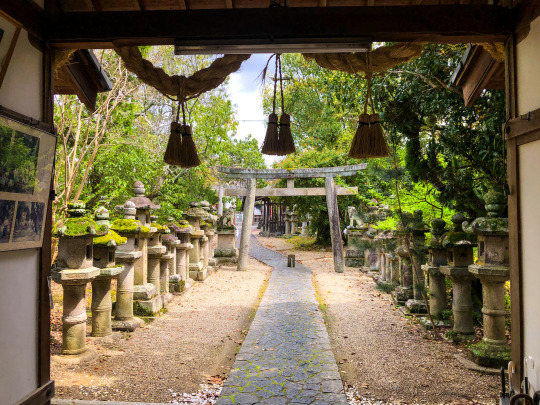
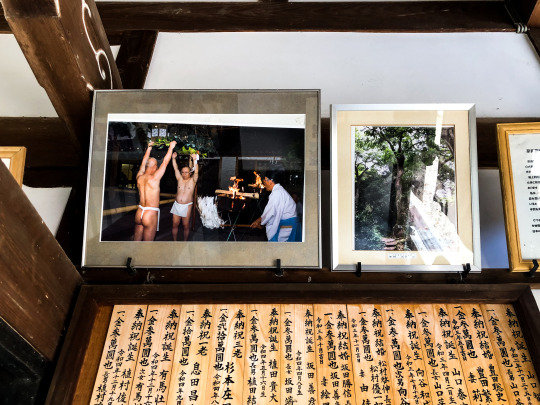
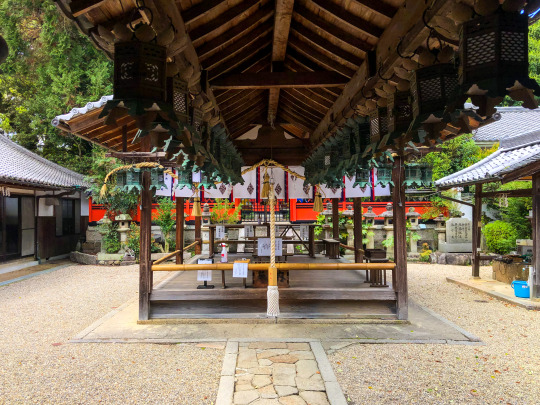
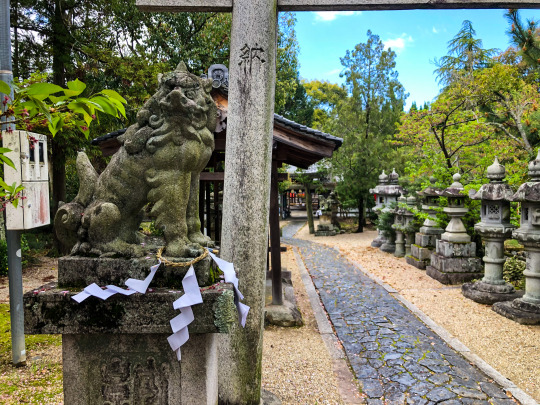
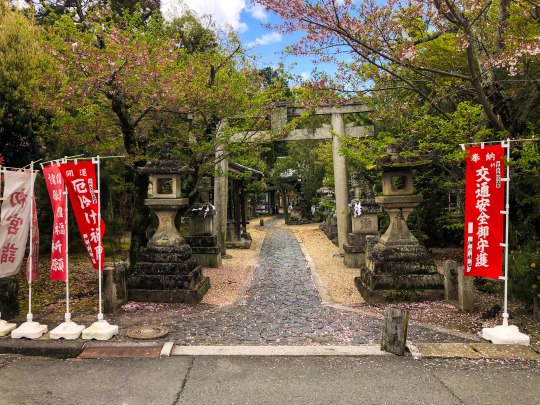
Nara egyébként Oszaka és Tokió, sőt, még Kiotó után is elképesztően vidékies. Jó volt itt eltölteni ezt a pár napot, de amit látni lehetett, azt nagyjából láttam. Holnap már újra Oszakában leszek, ahonnan sajnos szerdán repülök Budapestre. Addig viszont még van pár nap, amik előreláthatólag nagyon izgalmasak lesznek. Különösen a holnapi.
Végezetül pedig néhány random kép a sétáról.
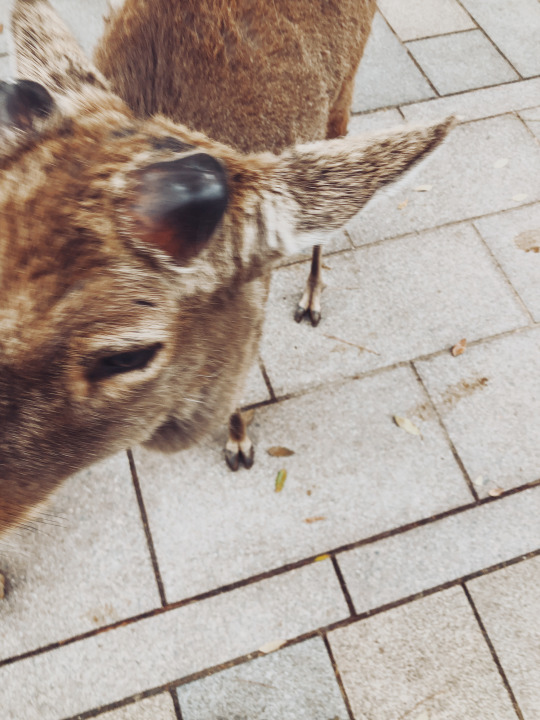
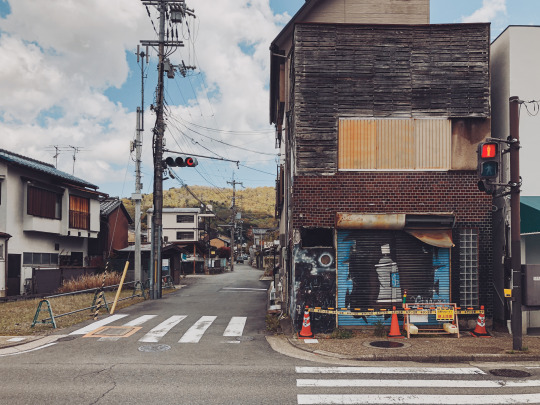
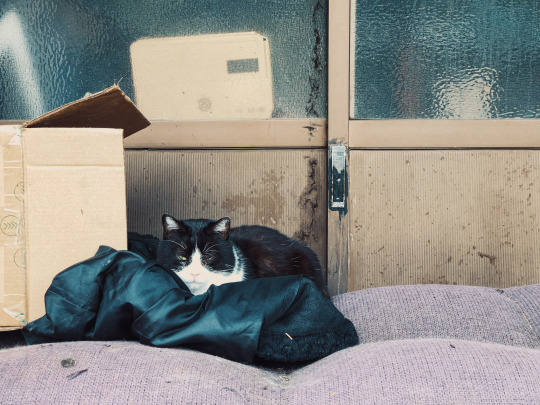
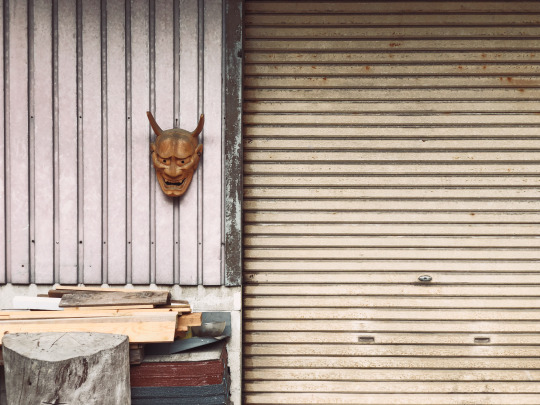

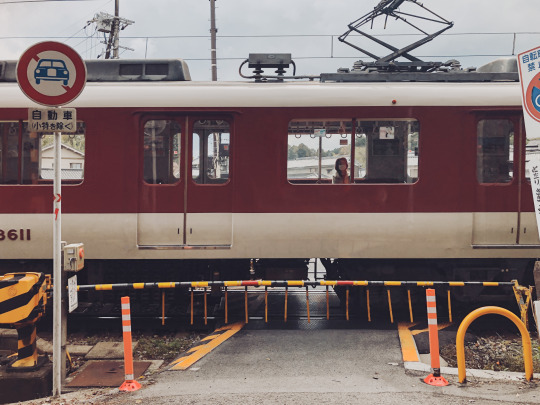
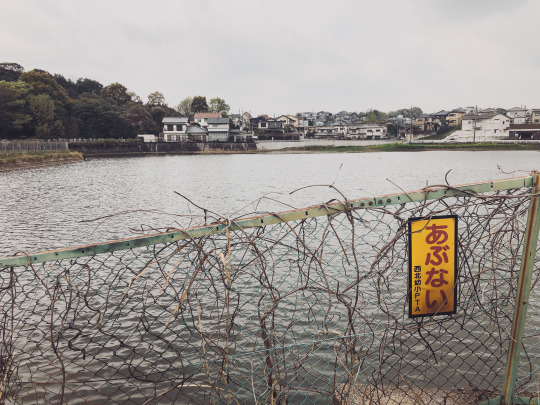
21 notes
·
View notes
Photo
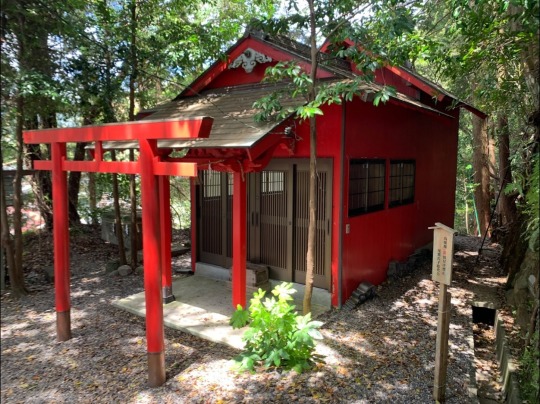
Fukusaku Inari Jinja Shrine (福作稲荷神社), a small sub-shrine to Inari (稲荷), deity of bountiful harvests and prosperous productivity, on the grounds of Hachiman Jinja Shrine (八幡神社) in Owase, Mie Prefecture
Photo by ToM, April 2019
51 notes
·
View notes
Text
On Yorishiro

Image Source: Daihou Hachimangu
A yorishiro is a vessel in which kamisama can be called down into and reside, temporarily or longer-term. Examples of this include shide, rocks (especially large ones), islands, and so on. Most Japanese laypeople do not make yorishiro because they have access to shrines distributing ofuda, but for a lot of overseas Shintō practitioners it is a good alternative when obtaining an ofuda is difficult. To be specific, this should only be done when you have no way of obtaining an ofuda for the kamisama you would like to worship. Even then, you can practice 遥拝 yōhai, which is to pray in the direction of the shrine you would like to pray at. Ofuda are always the best option. This is also very different from making an ofuda, which should never be done by a layperson.
What is a yorishiro?
The Kokugakuin University dictionary defines it as follows:
The place (or object or person) inhabited by a kami's spirit when it descends for a religious ceremony or when possessing a person. Yorishiro may be natural objects such as trees or rocks, or implements prepared for use in rituals, such as pillars, banners, or ritual emblems called gohei. In those cases in which a human acts as a yorishiro, he or she is referred to as yorimashi. Yorishiro may also be called tsukawashime or osakigami ("servant familiars") based on the concept that kami may possess and use feral dogs, wolves, monkeys, and birds as their familiars. Ancient forms of yorishiro include himorogi (divine trees), iwasaka (rock cairns), and the various hand-held ritual implements generally referred to as torimono. In particular, the rituals at himorogi and iwasaka reflect the belief that kami make their presence known in ritual sites with natural forests, groves, and rocks; this belief led to practices such as erecting trees in ritual sites and decorating them with objects into which the kami might descend. Many different forms of yorishiro exist, ranging from the large cones of sand seen in the Miare shinji of the Kamo Wakeikazuchi Shrine, to the "heart pillars" (shin no mihashira) of the Grand Shrines of Ise, the log pillars (mihashira) seen in the Onbashirasai of the Upper and Lower Suwa Shrines, the shibasashi of the Usa Hachiman Shrine, and the ohake or osashibō used at local shrines to mark the house of the lay priest for that year (see tōya).
How to Handle and Create a Yorishiro
A yorishiro is treated with the utmost care and respect. Your hands must be clean when handling one, and you should try to be clothed in not-pajamas (not necessarily formalwear -- just clothes that are what you'd wear normally). You can use a mirror, such as the ones commonly placed on kamidana (that are purchaseable online) or use a stone and other such natural item if that makes sense to you. Make sure to purify it before placing it on your kamidana, and to remember that a yorishiro cannot be repurposed once consecrated. For purifying the item to be turned into a yorishiro, you may chant Ōharae no Kotoba and sprinkle salt on it.
How to Create a Gohei
A gohei is a paper and wood yorishiro that is often seen at shrines, but is appropriate for home worship as well, especially if you are unable to access an ofuda. It is important to do this with clean hands and in a clean setting.
Here is some footage of a person folding some gohei. The knife/scissors etc. you use to cut the paper should be dedicated to this purpose. Rice paper is cut and folded into a specific shape (known as shide), and the wood holding the paper (heigushi) should be wood or bamboo. It seems that most people recommend securing the shide onto the heigushi with clean or pure hemp string. @livingwithkami advised me that some clergy specifically advise to use knives (i.e. X-Acto knife style knives) and cutting mats instead of scissors. It's also worth noting that both these videos do treat the paper a little roughly. If you make a mistake, you must start over again from the beginning. Create gohei with a sincere and pure heart, and keep in mind that this is an item that is for kamisama -- this is why so much care goes into making it.
youtube
youtube
Some further photos of gohei creation from Kino Atago Jinja
Similarly, but from Tsurugamine Kumano Jinja
A handy diagram on the first two pages here
There are different shapes for some kamisama, but a lot of this can depend on the shrine or family, etc. This simple lightning shape is almost universally used and therefore I recommend it the most.
Enshrining a Gohei
Enshrining a gohei is not too dissimilar from enshrining an ofuda -- make sure it stays upright on your kamidana. There are stands for gohei to this end that you can purchase online or make yourself. Other than that, standard protocols apply.
237 notes
·
View notes
Photo
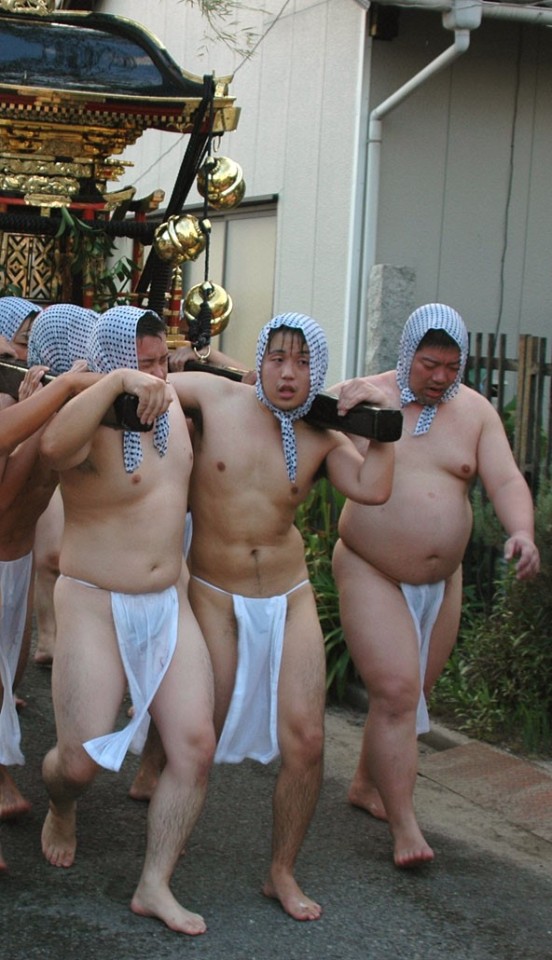
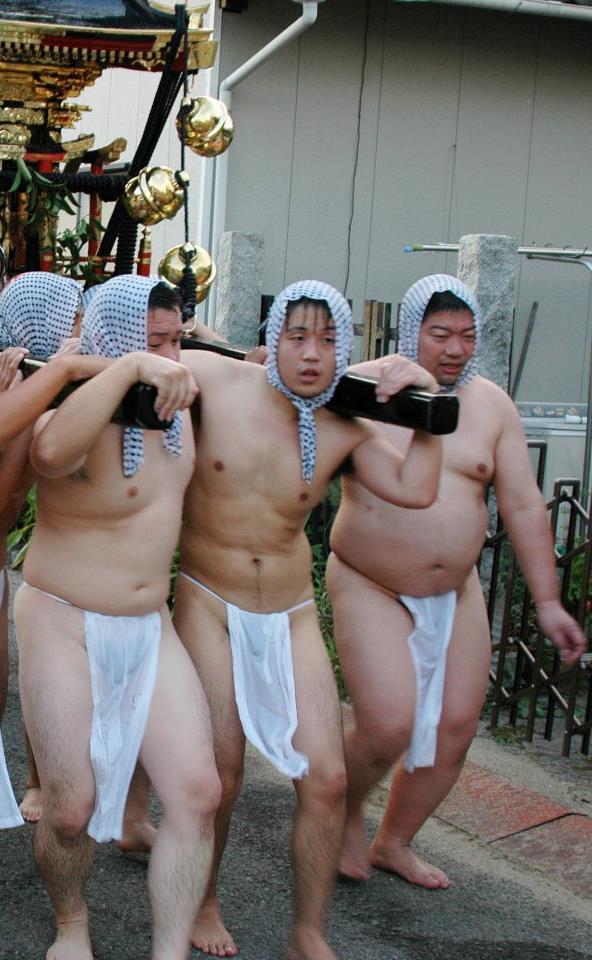
川狩り/秋季大祭 - 勝岡八幡神社, 松山, 愛媛 Kawagari/Autumn festival - Katsuoka Hachiman Jinja, Matsuyama, Ehime
61 notes
·
View notes
Text
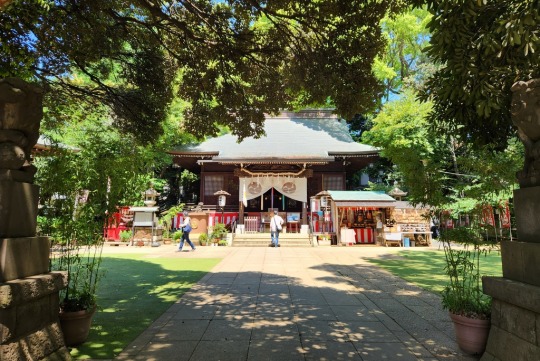
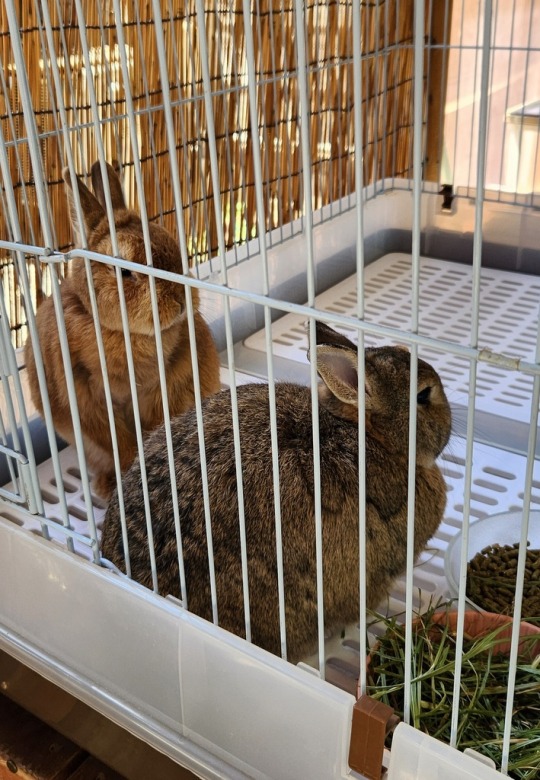
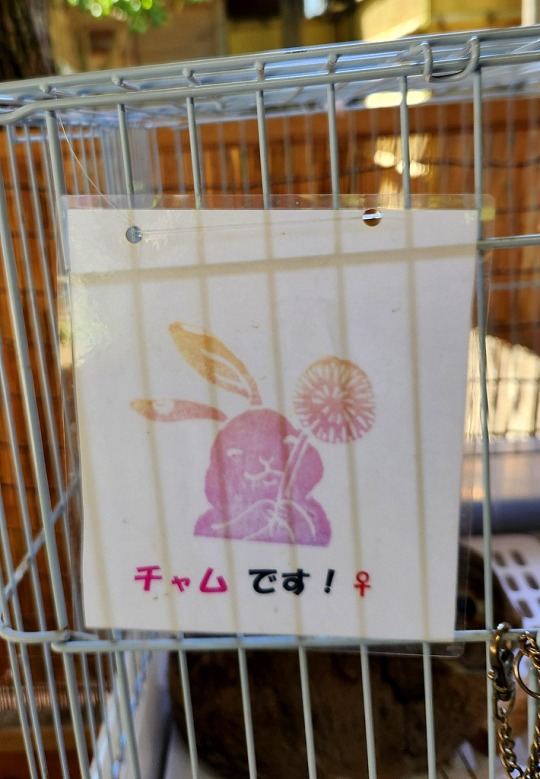

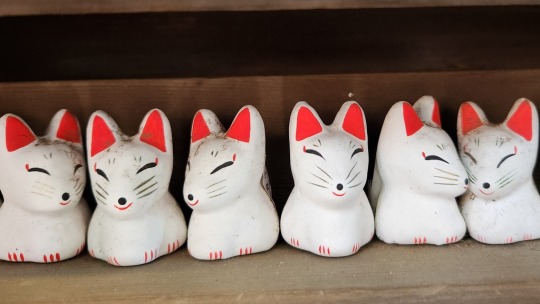
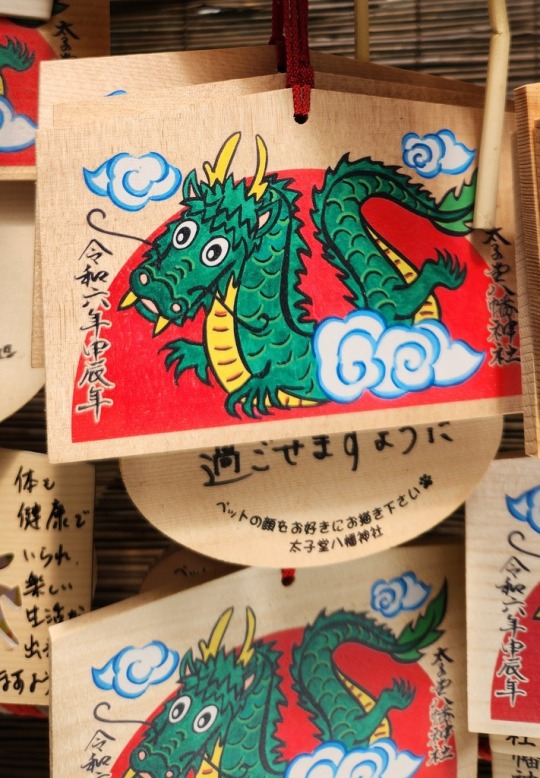

Taishidō Hachiman Jinja in Setagaya has several rabbits on its premises. The shrine is tranquil thanks to its trees, but also irresistibly cute. Evidence supplied above, including the rabbits Chamu and Bubu.
#Shinto#shrines#Setagaya#my photos#I hope @shoku-and-awe sees this#she loves bunnies#this is not a hide-and-seek shrine#(see tag on my blog)#it's quite prominent in the community#PS carp banners for Children's Day on 5 May
138 notes
·
View notes
Text
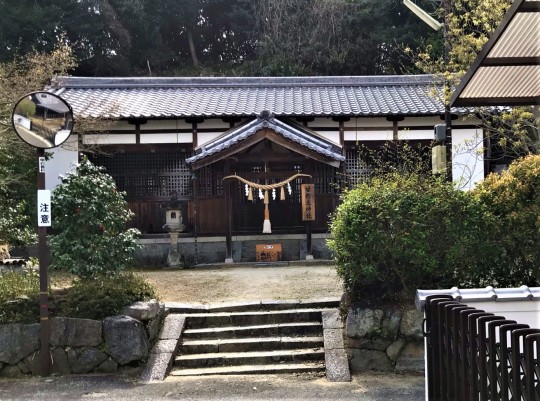
No Santuário Amakashinimasu-jinja, consagrado à Imperatriz Suiko, a primeira mulher a ascender ao Trono do Japão
Por Cláudio Tsuyoshi Suenaga (texto e fotos)
O santuário xintoísta (jinja) Amakashinimasu está localizado na colina (de apenas 148 metros de altura) Amakashi-no-Oka no vilarejo (mura) de Asuka, condado de Takaichi-gun, Prefeitura de Nara (626 Toyoura, Asuka, Takaichi District, Nara 634-0107). Era um Shikinai-sha (santuário listado nas antigas leis de Engishiki, livro japonês de leis e normas completado em 927 d.C.) e foi categorizado como um santuário de aldeia no antigo ranking de santuários.
O santuário é consagrado à primeira mulher a ascender ao Trono do Crisântemo, a Imperatriz Suiko (554-628, que reinou a partir de 592), o 33° Imperador do Japão.

A Imperatriz Suiko, a primeira mulher a ascender ao Trono do Japão. Pintura de autor desconhecido.
O Amakashinimasu-jinja está localizado logo atrás do Toyurano-miya, o palácio onde Suiko foi entronizada, e topograficamente fica na área sinuosa do rio Asuka. Diz-se que a própria Suiko andou sobre os paralelepípedos desgastados que remanescem aqui, onde os pilares ficavam.
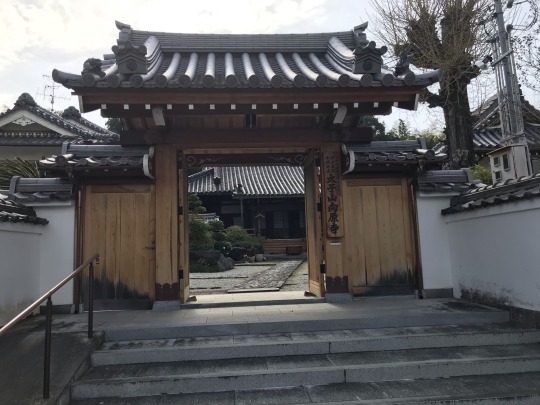
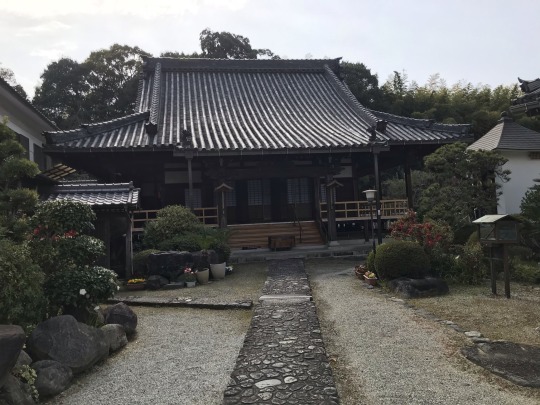
Toyurano-miya, o palácio onde Suiko foi entronizada.
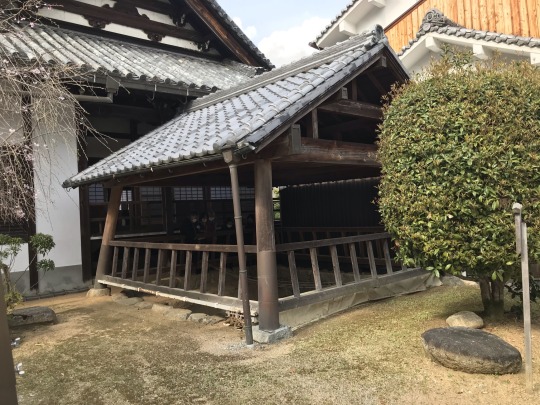
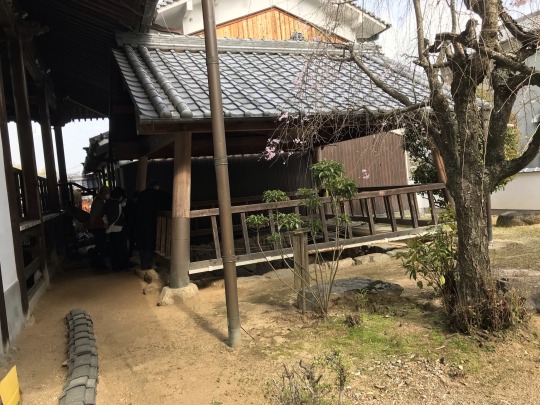
Aqui se pode ver os restos da fundação original do palácio.

Sobre estes paralelepípedos desgastados que remanescem teria caminhado a Imperatriz Suiko. Foto: https://asuka-japan-heritage.jp/global/en/suiko/detail/toyuramiyaato_s.html
Suiko, a segunda filha do Imperador Kimmei (509-571, que reinou a partir de 539) com Soga no Kitashihime, casou-se com o Imperador Bidatsu (538-585, que reinou a partir de 561) quando tinha 18 anos.
Maruyama (Montanha Redonda), em Asuka, no sul de Nara, o maior kofun de Nara e o sexto maior kofun, ou antigo túmulo, de todo o Japão, seria um dos locais de descanso do Imperador Kimmei, e de sua consorte Soga no Kitashihime, pais da Imperatriz Suiko. Os restos mortais de Kimmei e Kitashihime, contudo, não estariam em Maruyama, mas no Kimmei Tenno-ryo em Asuka. O Nihon Shoki afirma que quando Suiko enterrou novamente sua mãe, ela fez uma prece na estrada em Karu (agora Ogaru, Kashihara). Mas o livro não dá a localização do mausoléu.
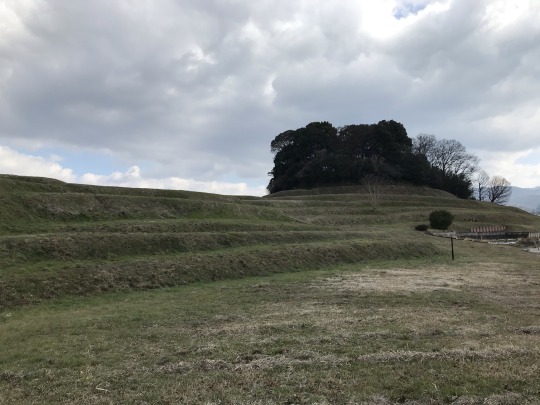
Foto que tirei do kofun de Maruyama, que mede 318 metros de comprimento e 21 metros de altura e apresenta um formato típico de buraco de fechadura ou jarra de maná, visto do alto.
Após a morte de Bidatsu, Yōmei (540-587, irmão de Suiko) chegou ao poder, mas morreu cerca de dois anos depois. Uma luta pelo poder se seguiu entre os clãs Soga e Mononobe, com os Soga apoiando o príncipe Hatsusebe, e os Mononobe apoiando o príncipe Anahobe. Na Batalha de Shigisan, os Mononobe foram derrotados, e assim o príncipe Hatsusebe é coroado Imperador Sushun em 587.
No entanto, Sushun começou a ressentir-se do poder de Soga no Umako (551-626), que ajudou a promover o budismo no Japão empregando imigrantes vindos da China e Coreia, e que provavelmente foi enterrado no kofun de Ishibutai, também na cidade de Asuka, em Nara, a maior estrutura megalítica do Japão, a qual pude visitar e pesquisar pessoalmente. Confira:
Soga no Umako, talvez por medo de que Sushun viesse a atacar primeiro, mandou Yamatoaya no Ataikoma assassiná-lo em 592. Quando lhe pediram para aceitar o trono para preencher o vácuo de poder que se abriu, Suiko tornou-se em 593 a primeira de várias imperatrizes, que são assim escolhidas para evitar uma luta sangrenta pelo poder.
Ela é ali uma shusaijin (principal divindade consagrada) entre as demais: Hachiman-gu no kami (deus do arco e flecha e da guerra), Amaterasu-ōmikami ("a Grande Deusa Augusta que Ilumina o Céu", da qual o Imperador do Japão diz ser um descendente direto), Yatagarasu no kami (o "Corvo de Três Patas Mensageiro do Céu") e Sumiyoshi Daimyojin ("Grande Divindade Brilhante").
Magatsuhi no kami (Maga significa "desastre", tsu significa "de", e hi significa "espírito divino", ou seja, "deus do desastre") e Naobi no kami (divindades de purificação e remoção de calamidades) são as divindades originais, conforme mencionado no Gogun Jinja-ki (Registro de Santuários em Cinco Condados). Foi logo após o Período Edo (1603-1868) que a Imperatriz Suiko foi consagrada como um shusaijin. Diz-se que este santuário foi fundado por Takenouchi no Sukune, também chamado Takeshiuchi no Sukune (64-344), um estadista e herói lendário da História do Japão, adorado como um deus no xintoísmo.
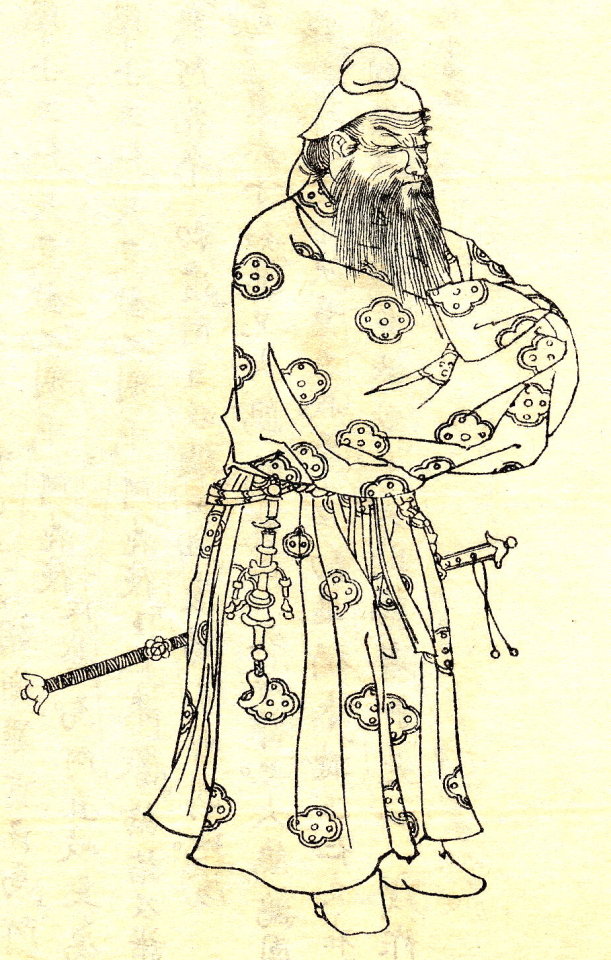
Takenouchi no Sukune desenhado por Kikuchi Yosai.
Takenouchi no Sukune era descendente do Imperador Kōgen (273-158 a.C.), o 8º Imperador do Japão. Takenouchi serviu a pelo menos cinco imperadores lendários (Keiko, Seimu, Chuai, Ojin e Nintoku), mas é mais conhecido por seu serviço como primeiro-ministro da Sesshō Jingū (Sesshō era o título dado a um regente nomeado para ajudar um imperador ou uma imperatriz até atingir a idade adulta), quando ajudou a Imperatriz-consorte Jingū (169-269) a preparar a invasão ao Reino de Silla. Pouco depois, Takenouchi foi acusado de traição. Ele foi submetido ao Kukatachi (uma forma de julgar colocando a mão em água fervente) para provar sua inocência.
A colina Amakashi-no-oka é o lugar onde a prova do Kukatachi era conduzida nos tempos antigos. Por isso o santuário é descrito como Yugisho no Kami ("o deus dos testemunhos com água fervente") no Gogun Jinja-ki (Registro de Santuários em Cinco Condados), escrito no período medieval.
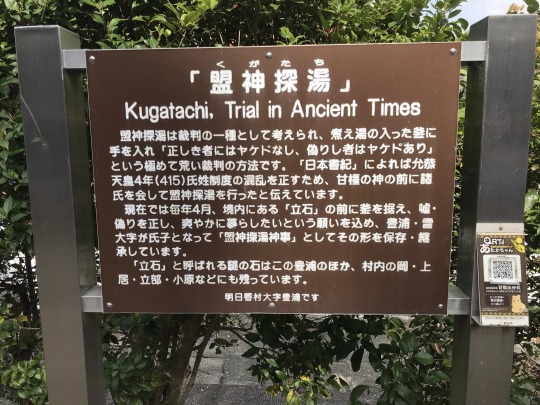
O cartaz diz: "Kugatachi, Julgamento nos Tempos Antigos".
Além de ter prestado serviços militares a esses imperadores, Takenouchi no Sukune era também um Saniwa (médium espiritual). A lenda diz que por ter bebido água diariamente de um poço sagrado, viveu até os 280 anos de idade. Vinte e oito clãs japoneses afirmam ser descendentes dele, incluindo os clãs Ki, Katsuragi, Heguri, Kose e Soga.
Takenouchi no Sukune é avô de Takenouchi no Matori, também chamado de Heguri no Matori, ministro da corte do Japão durante o Período Kofun (250 a 538 d.C.), que redigiu em uma mistura de caracteres japoneses e chineses a partir de documentos originais milenares escritos em Jindai Mōji ("a escrita da época dos deuses"), os controversos manuscritos Takenouchi Monjo, que conta uma história apócrifa não só do Japão como da humanidade, desde o início da criação até o surgimento do cristianismo, e antes dos registros do Kojiki (o livro mais antigo sobre a história do Japão) e do Nihon Shoki (Crônicas do Japão, o segundo livro mais antigo sobre a história do Japão). Os documentos de Takenouchi foram preservados pela família deste, de geração em geração, e mantidos dentro do Santuário Kousokoutai Jingu, na cidade de Ibaraki-shi, Prefeitura de Ibaraki, ate que em 1935, Kiyomaro Takeuchi, o caçula de uma estirpe de sacerdotes xintoístas, os descobriu.
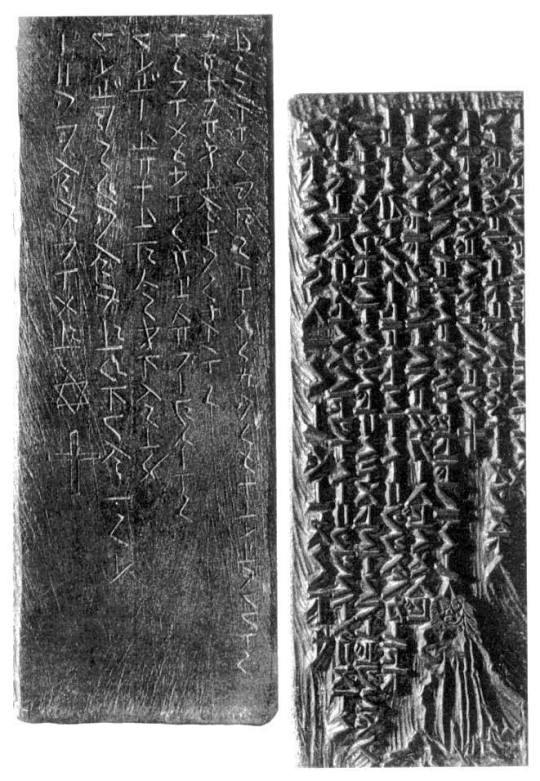
Parte do que seriam os documentos Takenouchi Monjo originais contando a história da presença de Jesus Cristo no Japão.
De tão explosivos e controversos, o governo japonês ordenou que os documentos Takenouchi Monjo fossem trancados em um museu em Tóquio e mantidos longe da vista do público. Durante a Segunda Guerra Mundial, Tóquio foi severamente bombardeada e o museu com todos os documentos foi supostamente destruído. Felizmente, a família Takeuchi havia feito cópias dos documentos antes de entregá-los ao governo. São essas cópias preservadas que podem ser vistas no Santuário Kousokoutai Jingu.
Os manuscritos Takenouchi falam de uma Era Dourada em nosso passado remoto em que a humanidade vivia em paz e harmonia, unida sob o governo mundial do filho de um Deus Supremo, e cuja sede estava localizada nas montanhas de Hida, ou Alpes setentrionais, uma cordilheira que atravessa as províncias de Nagano, Toyama e Gifu. O Santuário Kousokoutai Jingu era o mais sagrado de todos, tanto que todas as cinco raças da humanidade visitavam o santuário para celebrar um festival anual, e muitos grandes líderes espirituais o teriam frequentado para estudos e aperfeiçoamento espiritual, entre eles Moisés, Buda, Lao Tsé, Confúcio, Mêncio, Jesus Cristo e Mohammed.
Os documentos afirmam que Sumera-Mikoto, uma antiga palavra japonesa para "Filho do Sol", uma vez que os imperadores descenderiam do Deus Sol, fazia frequentes excursões por todo o mundo a bordo de um "navio voador" chamado Ameno-ukifune ("navio flutuante"). Os locais onde estes navios desembarcaram foram denominados "hane" ("ventos"), daí que muitos lugares no Japão tenham nomes que incluem a palavra "hane", como o Aeroporto de Haneda, em Tóquio.
Como os Jindai Mōji são uma invenção que data, no máximo, da época de Kamakura (1192-1333), ou seja, sua inexistência antes dessa data é corroborada pelas obras mais antigas do Japão, como os já mencionados Kojiki e Nihonshoki, que descrevem a chegada e a adoção da escrita chinesa em um arquipélago japonês que não tinha escrita, toda a credibilidade dos documentos Takenouchi Monjo fica comprometida. Ademais, a transcrição a partir dos originais foi feita por ninguém menos do que o astroarqueólogo e ufólogo Wado Kosaka (1947-2002), que não se fez de rogado e incluiu descrições de como os ancestrais da raça humana vieram do espaço sideral, do que aconteceu com a Atlântida, e, claro, onde Jesus Cristo terminou sua vida. O especialista em religião da Universidade de Quioto, Toji Kamata, classificou os documentos de “fakelore”.
Mas voltando ao Amakashinimasu-jinja, há um megálito em seu recinto, uma pedra gigantesca em forma de placa de gnaisse com 3 metros de altura chamada Tateishi. Há um buraco na frente dela, e o caldeirão usado para os rituais é colocado nesta parte. Ainda nos dias atuais, uma cerimônia chamada Meishintanyu Shinji é realizada no mês de abril.

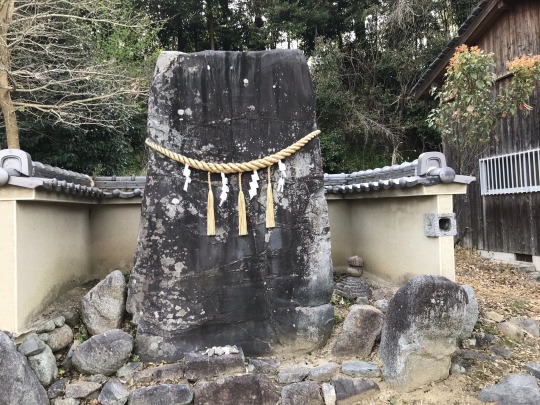

O Tateishi, um megático de gnaisse de 3 metros de altura, envolto pela corda shimenawa, um resquício da influência do judaísmo no Japão.
Conforme explico em meu livro recém-lançado pela Editora Revista Enigmas, As Raízes Hebraicas da Terra do Sol Nascente: O Povo Japonês Seria uma das Dez Tribos Perdidas de Israel?, na religião xintoísta há o costume de cercar um local sagrado com uma corda chamada shimenawa, que tem pedaços de papel branco inseridos ao longo da borda inferior da corda. A corda shimenawa é definida como limite. A Bíblia diz que quando Moisés recebeu os Dez Mandamentos de Deus no Monte Sinai, ele “estabeleceu limites” em torno dele para os israelitas não se aproximarem (Êxodo 19:12). Embora a natureza desses “limites” não seja conhecida, cordas podem ter sido usadas. A corda japonesa shimenawa pode então ser um costume originário do tempo de Moisés. O padrão em ziguezague de papéis brancos inseridos ao longo da corda remete aos trovões no Monte Sinai.
Saiba mais em meu quinto e mais novo livro
AS RAÍZES HEBRAICAS DA TERRA DO SOL NASCENTE: O POVO JAPONÊS SERIA UMA DAS DEZ TRIBOS PERDIDAS DE ISRAEL?
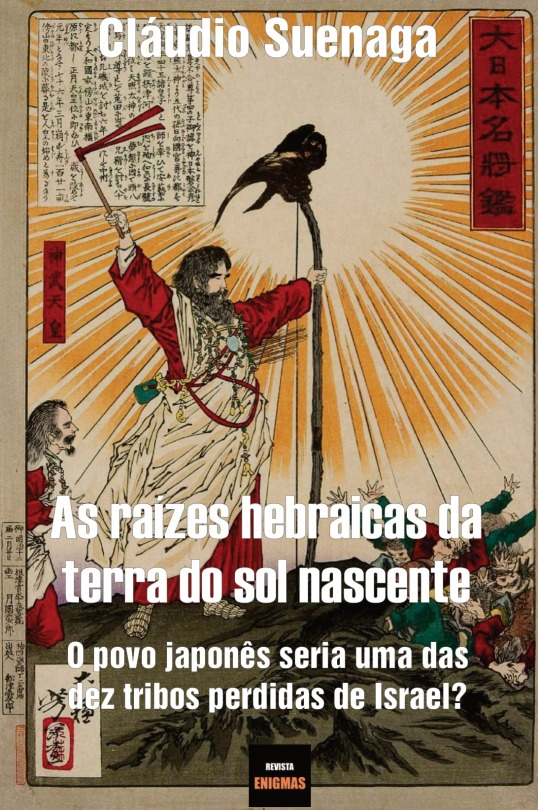
Sinopse: Algumas das maiores influências do Japão vieram de contatos com hebreus. Não só os mitos de origem, a genealogia divina, os rituais e os costumes são semelhantes, como a estrutura dos santuários xintoístas é equivalente ao Templo de Jerusalém, e o Mikoshi (santuário xintoísta portátil transportado em festas) é assaz parecido com a Arca da Aliança em tamanho e forma. Arca que muitos garantem estar escondida no Monte Tsurugi, na ilha de Shikoku, província de Tokushima. Além disso, na língua japonesa existem várias palavras hebraicas com a mesma pronúncia e o mesmo significado. Mas haveria algum fundamento na teoria da ancestralidade comum nipo-judaica, surgida no começo do século XVII, que afirma que o povo japonês pertence às Doze Tribos de Israel? Teriam os japoneses sangue hebreu correndo em suas veias? Seria esse o motivo de muitos judeus estarem discretamente adquirindo terras em várias partes do Japão? Você irá saber as respostas para tudo isso e muito mais ao refazer conosco o percurso milenar de judeus que ajudaram a forjar tanto o Japão antigo como o de hoje.
FRETE GRÁTIS PARA TODO O BRASIL. ENCOMENDE AGORA MESMO O SEU EXEMPLAR. VOCÊ NÃO PODE DEIXAR DE LER:
Assista ao documentário Hebreus no Japão, produzido, editado, apresentado e narrado pelo editor André de Pierre, com roteiro de Cláudio Suenaga, sobre o seu livro As Raízes Hebraicas da Terra do Sol Nascente: O Povo Japonês Seria uma das Dez Tribos Perdidas de Israel?:
youtube
#jinja#japan#religiao#judaísmo#nara city#historia#historical revisionism#arqueologia#templos#hebreus#megalithic#enigmas#livro#japão#Youtube
3 notes
·
View notes
Text
0000 Warbunton Shrine | 0001 Doroshi Hachimangu | 0002 Hamamura Shrine
0003 Katakana Shrine | 0004 Mishima Shrine | 0005 Bazumitama-sha
0006 pomponne Shrine | 0007 Eifuku Shrine | 0008 Eifuku Temple
0009 Cue Gri Jinja | 0010 Princess Shrine | 0011 Tonarino Shrine
0012 Laem Shrine | 0013 Para Shrine | 0014 Kuroneko Jinja
0015 Yasaka Jinja | 0016 Tenmangu Jinja | 0017 Itame Ham Shrine
0018 Japonica Shrine | 0019 Neochi Shrine | 0020 Okinawa Shrine
0021 Kokuryu Shrine | 0022 Ni Jinja | 0023 Piyopiyo Shrine
0024 Noha Shrine | 0025 Saihate Inari Shrine | 0026 Koyagi Shrine
0027 Hamstar Shrine | 0028 Haiku Shrine | 0029 Sen-Cat-Shrine
0030 Venezia Shrine | 0031 Hinamizawa Shrine | 0032 Kanaru Shrine
0033 Mr. Louis Shrine | 0034 Susukino-Inari Jinja | 0035 Shiki-Shinto Shrine
0036 Apo Hachimangu | 0037 Salmaru Grand Shrine | 0038 Il Micio Shrine
0039 Son Clave Shrine | 0040 Drobak Shrine | 0041 SnowPastel Shrine
0042 Nadeko Shrine | 0043 Katsudon Shrine | 0044 Mambo Shrine
0045 Sessha Mambo Shrine | 0046 Umigami Shrine | 0047 Yozakura Shrine Ocean
0048 Sakura Shrine | 0049 Akiba Inari Shrine | 0050 Lazy Shrine
0051 Honpou Inari Jinja | 0052 Togetsu Jinja | 0053 Neko Jinja
0054 Kusanagi Shrine | 0055 Ouse Jinja | 0056 Nekoma Shrine
0057 Lion Temple | 0058 Usagi Shrine | 0059 Kiyomizu Temple
0060 kingyo jingu 金魚神宮:

kingyo jingu is an ethereal place, and celebrating its 10th year. Giant goldfish inside the Shrine give it its name. There are also fish swimming in the tank/counter of the cafe and in suspended fishbowls (the cat does not seem particularly interested in them), where you can stop for a snack. You can pick up a lovely Hamaya for the Year of the Dragon, and you can also take fuda home with you- the strips of paper with writing you may have seen at other Shrine offices, which you can display at home for protection and luck from the deity of this place. "Jingu" instead of "jinja" can mean this is a larger Shrine, or a imperial Shrine (however the exact rules on the difference varied over the centuries)- in the case of 0037 Salmaru Grand Shrine with the additional prefix of "big" it was translated as "Grand Shrine", and this is also the same "gu" as in Hachimangu for Hachiman Shrines. I have (mostly!) tried to avoid the pedantry of getting into the translations, but sometimes the proper Japanese name can give you more insight into the character of a place.
Goshuin Project 2024
0061 Azuki Shrine | 0062 Megumi Jinja | 0063 Sea Butterfly Shrine
0 notes
Text
Honden Principle Architectural Styles
平入りHirairi
Traditional architectural style where the building’s main entrance is on the side which runs parallel to the roof.
流造 Nagarezukuri
The original architectural style based on Kamigamo • Shimogamo Shrine’s Honden. Gabled, flat-entry entrance with eaves extending forward.
Examples including but not limited to Kamowakeikadzuchi Jinja 賀茂別雷神社 (Kyoto Prefecture, Kyoto City), and Kamomioya Jinja 賀茂御祖神社 (Kyoto Prefecture, Kyoto City).

神明造 Shinmeizukuri
The original architectural style based on Ise Jingū’s Seiden (Honden). Gabled structure with flat roof. Placed on the roof are ornamental crossed rafter ends (千木 chigi) and a log set perpendicular to the ridge poles (鰹木 katsuogi).
Examples include but are not limited to, Ise Jingū 伊勢神宮 (Mie Prefecture, Ise City), and Nishinashinmeigū 仁科神明宮 (Nagano Prefecture, Omachi City).

八幡造 Hachimanzukuri
The original architectural style based on Usajingū’s Honden. Two gabled flat roof structures are connected at the front and rear. Both are the Honden.
Examples include but are not limited to, Usajingū 宇佐神宮 (Ōita Prefecture, Usa City), and Iwashimizu Hachimangū 石清水八幡宮 (Kyoto Prefecture, Hachiman City).

妻入り Tsumairi
Traditional architectural style where the entrance is perpendicular to main building.
大社造 Taishazukuri
The original architectural style based on Izumo Taisha’s Honden. Both the main building and the entrance are gabled. As for the Honden, it is quite large for a shrine building.
Examples include but are not limited to, Izumo Taisha 出雲大社 (Shimane Prefecture, Izumo City), and Kamosu Jinja 神魂神社 (Shimane Prefecture, Matsue City).

住吉造 Sumiyoshizukuri
The original architectural style based on Sumiyoshi Taisha’s Honden. Similar to Taishazukuri, however, the walls are white, the pillars are painted vermillion, and inside there are two rooms.
Examples include but are not limited to, Sumiyoshi Taisha 住吉大社 (Osaka Prefecture, Osaka City), and Sumiyoshi Jinja 住吉神社 (Fukuoka Prefecture, Fukuoka City)

春日造 Kasugazukuri
The original architectural style based on Kasuga Taisha’s Honden. The gabled building has eves over the entrance. Many of the shrine buildings are small.
Examples include but are not limited to, Kasuga Taisha 春日大社 (Nara Prefecture, Nara City), and Udanomikumari Jinja 宇太水分神社 (Nara Prefecture, Uda City)

Kirizukuri 切妻造 (gabled roof) is a roof with two sloping sides from the ridge at the top of the roof head to the ground, like a book lying face down.
Translations from this page

2 notes
·
View notes
